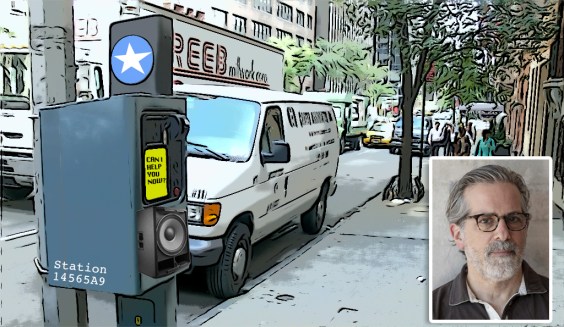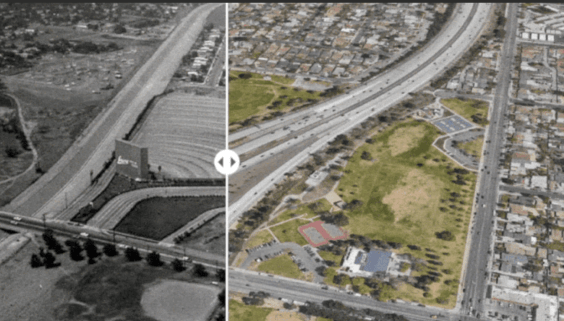Cross-posted from the Strong Towns blog.
Charles Marohn is a planner and engineer in Minnesota and the executive director of Strong Towns.
We've been looking at the instincts of today's transportation agencies. While on an individual level it is clear that these organizations are filled with people who are professional, competent and want to do the right thing, the institutional inertia is carrying them in wayward directions.
When confronted with a persistently dangerous intersection, there is no push or conversation to close it. That is not in the play book because the policies of transportation agencies are deeply rooted in misunderstandings about economic growth and development. What is in the play book is the will to make large expenditures on modest improvements in the hopes that the problem will be alleviated. This from agencies that are fatally short of funding. At least we tried.
Unfortunately, those misunderstandings we have about growth and development correlate highway spending with increased prosperity. In reality, this is an illusion brought about by quick and easy development leveraged off these massive investments. The lack of productivity in this approach means that, over the long term, the costs far outweigh the gains. It is the Ponzi scheme of the Suburban Experiment. We're in the unwinding phase.
Nobody should understand that more clearly than our nation's DOTs. They are simultaneously over committed and under funded. While they obsess about the latter, it is the former that they will ultimately be forced to reconcile. Many in these agencies -- especially the second tier of leaders that are a little more removed from our highway building heydays and a little further from retirement than the first tier -- understand this clearly, but they lack an acceptable alternative approach. They are trapped by the inertia of their organization.
It is to those people that I offer my thoughts on the principles and understandings that a Next Generation DOT should embody when making that inevitable course correction.
1. Transportation spending is not economic development.
Speaking of transportation in terms of economic development has been a convenient way to secure additional funding streams. Unfortunately, the meme has become part of the wider culture, even though we know that good transportation systems serve productive growth, not create it. Transportation systems move goods and people. They are not catalysts for productive growth. We know how much that interchange costs so we need to stop pretending that the quiki mart, pet stop and strip mall somehow justify the investment just because it makes the locals happy.
2. Transportation spending is not job creation.
Yes, DOTs employ people. Yes, construction projects employ people. When we pay people to dig a ditch and then fill it back in, we're right back where we started. When we pay people to build a highway for the sake of creating jobs, we're left with the long term financial liability of maintaining an unproductive highway. Short term job creation may be a happy side effect of what we do, but let's not allow people to pretend that it is an end unto itself.
3. We need to budget based on what we have, not what we want to do.
We always start our budgeting process with a list of projects we feel are important. We may rank them by some objective criteria, but we start with the list of projects. This list becomes our target budget, and we proceed to undertake projects where we can get the funds. This system is completely backwards.
We need to start our budgeting process with our budget. How much money do we have? We then need two lists. The first is our obligations. What systems do we currently have a public obligation to maintain, when does that obligation come due and how much will it be? This is a list that, in theory, never shrinks (unless we abandon some part of the system). This list needs to have everything and, once a project is completed, it goes back on the list with an updated time frame and cost.
This first list will almost certainly exceed the budget by many factors, but if by some odd chance it does not, then a second list of expansion projects can be taken seriously. This second list should have everything that would be a new system: new overpass, new bridge, additional lanes, new turn lanes, new signals.... None of this should ever be even considered so long as the first list is running a projected deficit.
We need to stop pretending we can do everything and instead be the hard-nosed realists the public generally thinks we are.
4. The most unsafe condition we can build is a STROAD. Our primary design goal must be to eliminate them.
A STROAD is a street/road hybrid. It is all too often the default design of our highway system. A STROAD combines elements of a street -- intersections, turning traffic, dramatic speed differentials, parking, pedestrians -- with the high speed geometries of a road. Professionally, we all understand that this is the most dangerous type of environment we could construct.
As engineers, we should primarily concern ourselves with the safe travel of goods and individuals. In our hearts, most of us believe this to be the only criteria that truly matters, with all other factors being subservient to safety. We have the professional clout to demand an end to STROADS in the name of safety. That this will help us improve travel times and reduce the costs associated with the first list (See #3 above) is a happy consequence.
5. We must build differently within a city than we build outside of it.
It is professionally embarrassing how tone deaf we are to productive urban settings. While we make all kinds of compromises to travel time in our endless STROAD environments outside of town, we go to great lengths to resist changes to the highway geometry once we are within the city. Why?
We need great highways to connect our productive cities. Once within a city, we need to build great streets to maximize that productivity. As we eliminate STROADS (see #4 above) and construct great streets, we'll not only improve safety but travel time as well.
And if we really set our minds to becoming experts in urban design, we may find that some crazy ideas could go a long ways in cutting our costs, making our cities financially more productive, improving safety, creating a better quality of life for people and significantly reducing travel times.
There is an important difference between a road and a street.
6. We need to improve travel time by eliminating access points outside of cities.
For some reason we fear this, even though we have the capacity, the professional gravitas and an urgent need to do it. This is an enormous safety issue, one we've been able to gloss over with very expensive (and not very effective) half measures. The budget catastrophe we face is going to force us to think differently.
Providing commuters with expensive shortcuts is no longer in the budget. Our highways need to move people and goods between productive places. Anything else is an expensive luxury that simply can't be justified.
7. We must stop using traffic projections to give a veneer of expertise to something we have proven incapable of doing: predicting the future.
Since the budget realities we unveiled in making List 1 and List 2 (See #3 above) will force us to confront a world where we literally build no new roads, projections become useless. Even if we could do them well (we can't), it is not like we can build anything new anyway. We need to get a lot more productivity out of what we have.
In the off chance that we do find ourselves building some new system, that system needs to be in the service of an existing productive place. We need to be part of a country that becomes antifragile to projection error. We don't have the resources to do anything else.
All of our equations that assume continual growth in average daily traffic are being disproved by reality. Let's cling to reality. Our profession needs to focus less on building for what we hope will happen tomorrow and instead start maximizing the utilization of what we've already built today.
8. We need to build transit, but only through a value capture funding approach.
Transit systems -- particularly rail transit -- have high up front costs and very low long term maintenance costs. This contrasts with highways that have relatively high up front costs (albeit less than rail transit) and horrendous long term maintenance costs.
Rail transit lends itself extremely well to a value capture funding approach. This is going to require not only a different mindset, knowledge base and approach, but likely changes in statutes as well. If we are to be true problem solvers, instead of whining about gas taxes and calling for more deficit spending on the status quo, our advocacy organizations should be promoting this progressive and innovative approach, one that would naturally appeal to all sides of the political spectrum.
9. We must remain humble in the face of adversity.
The profession of civil engineering is an ancient one, but in terms of the history of human settlement, highway and traffic engineering has been around but a blink of an eye. In that brief experiment, we were given enormous power to go along with an extraordinary level of funding. While the blame can't be laid solely at our feet, history is not going judge kindly how America's incredible wealth was squandered.
The word contraction is sure to become part of this generation's lexicon, particularly when it comes to and cities and our infrastructure systems. We need to acknowledge -- to ourselves and to society -- that we do not have a pain free solution to the contraction dilemma. In fact, our toolbox contains no solutions, just rational responses that begin with acknowledging the reality of contraction.
While I personally straddle the great intellectual divide between the engineering and planning professions, I've always admired the way most engineers are, at their core, practical problem solvers. My greatest aspiration for the profession is that we will find the humility to acknowledge that we need to start solving a different set of problems.
I'm interested to hear what you would like to see in a Next Generation DOT. What have I got wrong? What have I overlooked? This conversation and more is taking place right now on the Strong Towns Network. Click on over and join the other problem solvers. There's no cost to you and lots to be gained.







